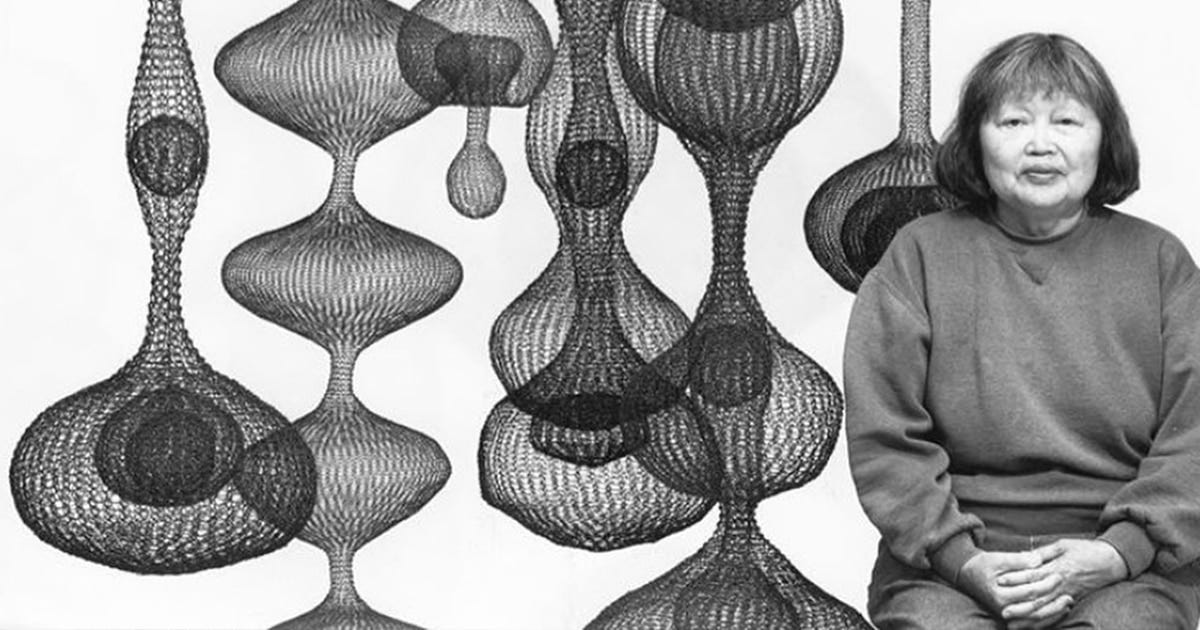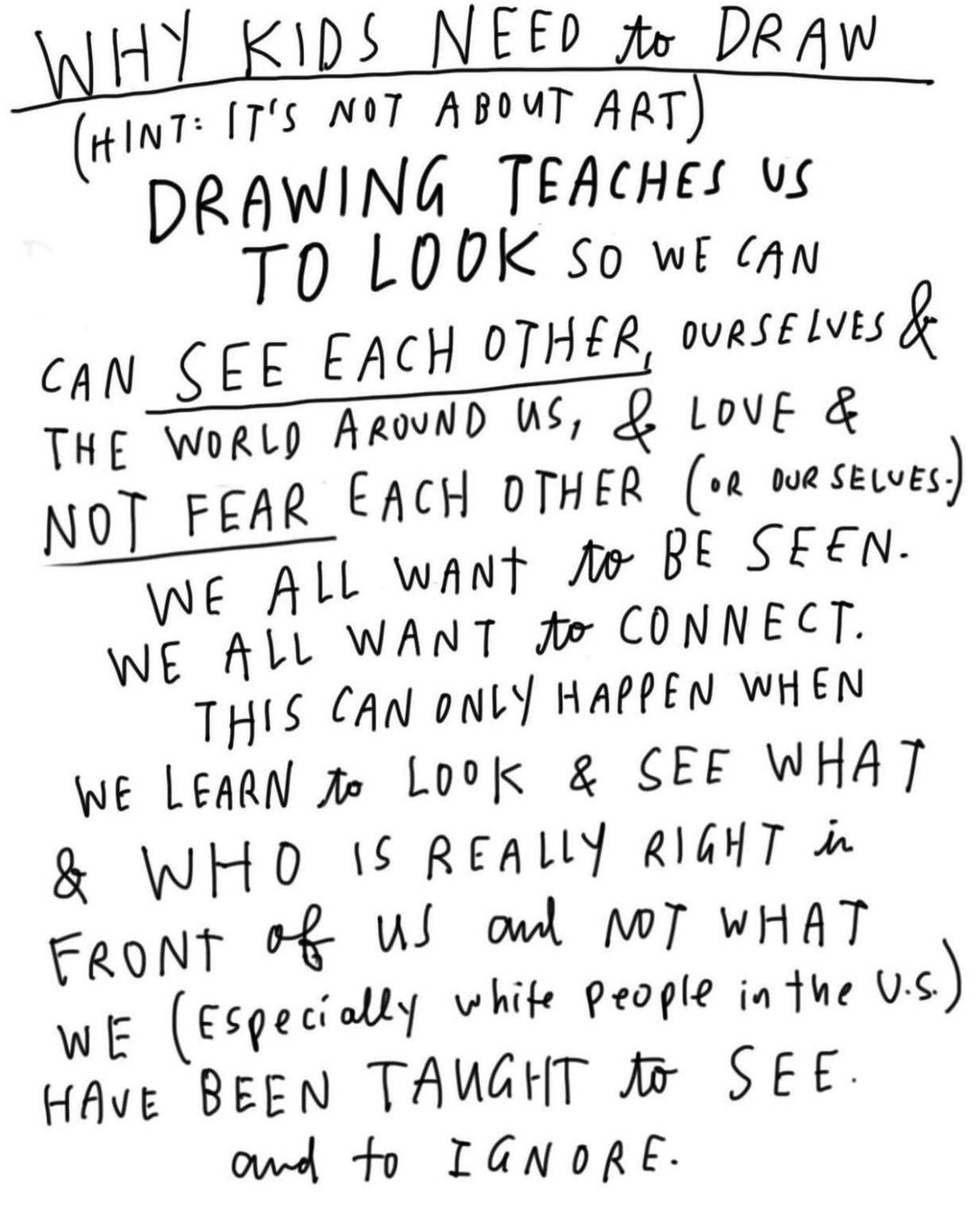Why We Draw and How it Helps
A reminder of DT's mission and some much needed Ruth Asawa
Hey GUT friends,
What a week. I’d originally planned on doing a new Back to Basics lesson today, but in light of the mass shootings in SoCal and the killing of 29-year old Tyre Nichols in Memphis, I’m changing tack. Instead, I’m sharing a reminder about drawing’s power to help us recognize one another’s humanity, and how drawing can help us center ourselves and process emotions. Plus tips on encouraging kids creativity from the son of artist Ruth Asawa.
Ready? Let’s go.
Why Drawing Matters
It feels like an important time to pause and reflect on the purpose of DrawTogether, including the Grown-Ups Table. It’s pretty simple, really. We use drawing as a vehicle to connect people with each other and the world around us. To look closely and carefully, to see people/things more for what they are and less what we expect them to be, and to help us imagine what’s possible.1
Think of the Blind Contour drawing exercise you did last week and how it changed they way you looked and what you saw. Remember what I talked about it in my TED talk: When we look closely at someone, take the time to get to know them, we begin to see them in a new way - and then it’s hard not to care for them.
And with that, we’re doing a throw-back this week that features one of my favorite artists whose process and outcome is calming, meditative and entirely human. That’s something I think we could all use right now.
Drawing in the Air with Ruth Asawa
“An artist is not special. An artist is an ordinary person who can take ordinary things and make them special.” - Ruth Asawa
News alert for newcomers: DrawTogether has a podcast! The pod is created for kids, but people of all ages do them. Each of the 35 (!) episodes we’ve produced so far features a drawing lesson, an artist profile or a guest visitor, and a real time drawing exercise. One of my all time favorite episodes featured the life and work of artist Ruth Asawa.

I share a bit about Ruth’s life and work in the podcast, but her are a few more fun facts: Ruth Asawa was the quintessential maker. She used her HANDS and whatever materials were available. Ruth focused as much on the process of making art as the outcome. And through all the changes and chapters in her life she never stopped. She kept making art.
During World War 2, Ruth and her family were unjustly placed in a Japanese American internment camp. But even there she kept on creating. She went on to study at the experimental Black Mountain College in North Carolina, and travelled to Mexico to see Diego Rivera’s murals and painting first hand. There, a local artisan taught her a basket weaving technique that became the basis for her wire sculptures.
Here are some traditional weaving techniques that look similar to Ruth’s wire work, and the drawing we do in today’s assignment/ on the podcast.

And here’s a photo of Ruth weaving a wire sculpture based on a technique she learned in Mexico. Or rather, here’s a photo of Ruth drawing in the air:

Ruth worked constantly. She had six kids all vying for her attention, but she was always folding paper, drawing on scratch paper, or looping wire… Ruth wove different techniques, cultures, identities and experiences into a tremendous life and body of work that continues to contribute so much to our creative humanity today. She made, taught and tirelessly advocated for arts education.
Ruth drew in the air.
Now it’s our turn.
Assignment
Keep reading with a 7-day free trial
Subscribe to DrawTogether with WendyMac to keep reading this post and get 7 days of free access to the full post archives.



